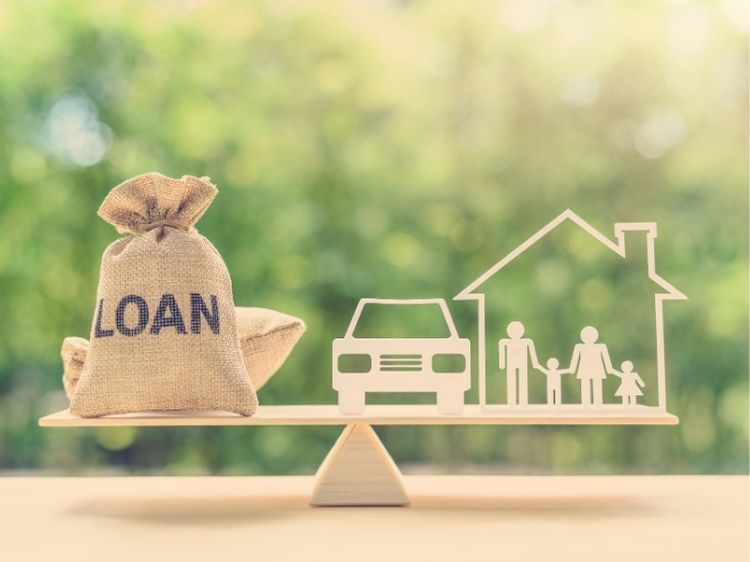The debate over student loan forgiveness is still a major topic of discussion with thousands of borrowers waiting for clarification on the future they will be able to repay their loan. As new developments are constantly announced and constant updates, knowing the latest developments is essential for those who are students, graduates and families trying to navigate the complex world regarding student loans. This article explores the current situation of student loan forgiveness and provides information on the latest developments and ongoing discussions as well as what to expect from borrowers moving forward.
A Changing Landscape for Student Debt Relief
In the last decade the issue of student loan forgiveness has moved from being a policy issue of a marginal nature to becoming a major topic in national debates on the financial stability of higher education. The student loan burden within the United States surpassing $1.7 trillion and increasing, the demand on policymakers to come up with solutions has increased. Recent reports indicate that the federal government is looking into different avenues to reduce the burden of financial burden, such as specific forgiveness programs and expanding loan repayment plans based on income.
The Biden administration has played a key role in bringing the issue of student loan forgiveness to the forefront of. In recent months Biden administration has announced a number of significant modifications, such as changes for changes to the Public Service Loan Forgiveness (PSLF) program and more comprehensive initiatives to tackle systemic inequities within this system. Although sweeping forgiveness for all borrowers remains unclear but incremental progress continues take place.
The Latest Developments in Student Loan Forgiveness
One of the biggest changes is the new method of public service loan forgiveness. This program, specifically designed to allow loan forgiveness for people who work in public service following 10 years’ qualifying payment is criticized due to the strict criteria and high rate of rejection. Recent changes have simplified the process and made it much simpler for borrowers who are eligible to obtain forgiveness.
Additionally, income-driven payment (IDR) programs have gone through changes to make sure that the greater number of borrowers are eligible for forgiveness of loans. With these plans, the monthly payments are limited to an amount of discretionary income, and any balance that remains forgiven following an agreed-upon number of years. These recent changes are intended to eliminate loopholes that have were previously preventing certain people from gaining the full benefit from these programs.
The most significant change is the ongoing effort of the administration to develop a new path to provide widespread forgiveness of student loans. Even though legal issues have hindered the process however, it is clear that the Department of Education is actively looking at ways to offer relief to a multitude of borrowers especially those who are facing an ongoing financial crisis or who have experienced excessive lending practices.
The Role of Legal Challenges in Shaping Policy
Legal battles are an ever-present topic in the quest for students loan repayment. In 2023 in 2023, the Supreme Court struck down a proposal to forgo up to $20,000 worth of federal loans to students per student in part due to legal concerns about the extent of executive authority. This ruling has made it difficult to establish broad forgiveness policies as policymakers are forced to look at different options.
Despite these setbacks and challenges, the Biden administration is still determined to explore ways to reduce debt. By taking advantage of current laws and policies, like the Higher Education Act, officials expect to get around legal hurdles and provide substantial debt reduction. It is important for borrowers to remain updated, as court rulings and policy modifications continue to influence the way things are done.
What Borrowers Should Expect Next
As the years progress, borrowers could anticipate more adjustments to student loan policies in particular due to the economic crisis and the popular demand for help remain. While the likelihood of universal forgiveness remains unclear however, targeted programs are likely to increase to encompass a larger variety of borrowers, such as people in communities with limited access and professions with high debt.
Experts recommend that borrowers be proactive, for example, confirming eligibility to participate in current forgiveness programs, registering in income-driven repayment programs and keeping up-to-date with federal announcements. Knowing the details of their loan and repayment options will help borrowers benefit from any future changes.
A Path Toward Financial Relief
The latest update on student loan forgiveness highlights the changing aspect of the debt-relief system in United States. While sweeping solutions are still elusive however, recent developments indicate an increasing commitment to address the issues that a lot of borrowers face. Through small-scale reforms, legal battles or novel policy suggestions the search for financial relief is gaining momentum.
For the borrower, keeping up-to-date is vital. The dynamism of forgiveness for student loans requires constant attention and flexibility, since the opportunities to get relief may arise suddenly. While policymakers work to refine their approach as they refine their strategies, the possibility of better financial prospects remains at hand, offering some hope for those who are burdened by student debt.
